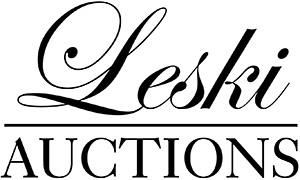Description:
JASCHA HEIFETZ - CERTIFICATE OF NATURALIZATION
Dated 5th May 1925, when Heifetz was only 25, this original signed document marks the day on which he became a citizen of the United States of America. Accompanied by his last US Passport, signed in 2 places; issued in January 1983. (2 items).
Heifetz was born in 1901, into a Russian Jewish family in Vilnius, then part of the Russian Empire. His father, Reuven Heifetz, was a local violin teacher and served as the concertmaster of the Vilnius Theatre Orchestra for one season before the theatre closed down. While Jascha was an infant, his father did a series of tests, observing how his son responded to his fiddling. This convinced him that Jascha had great potential, and before Jascha was two years old, his father had bought him a small violin, and taught him bowing and simple fingering.
At five years old, Jascha started lessons with Leopold Auer. He was a child prodigy, making his public debut at seven, in Kovno (now Kaunas, Lithuania) playing the Violin Concerto in E minor by Mendelssohn. In 1910, at the age of 9, he entered the Saint Petersburg Conservatory to study under Auer. He played in Germany and Scandinavia, and met Fritz Kreisler for the first time in a private home in Berlin in 1912. The home was that of Arthur Abell, the pre-eminent Berlin music critic for the American magazine, Musical Courier. After the 12-year-old Heifetz performed the Mendelssohn violin concerto, Abell reported that Kreisler said to all present, 'We may as well break our fiddles across our knees.'"
Heifetz visited much of Europe while still in his teens. In April 1911, Heifetz performed in an outdoor concert in St. Petersburg before 25,000 spectators; there was such a sensational reaction that police officers needed to protect the young violinist after the concert. In 1914, he performed with the Berlin Philharmonic conducted by Arthur Nikisch. The conductor was very impressed, saying he had never heard such an excellent violinist.
Heifetz and his family left Russia in 1917, traveling by rail to the Russian far east and then by ship to the United States, arriving in San Francisco. On 27 October 1917, Heifetz played for the first time in the United States, at Carnegie Hall in New York, and became an immediate sensation. Fellow violinist Mischa Elman in the audience asked "Do you think it's hot in here?", whereupon the pianist Leopold Godowsky, in the next seat, imperturbably replied, "Not for pianists." Heifetz, only 16 at this time, remained in the U.S. and became an American citizen in 1925.
Quantity : 2
Categories:
